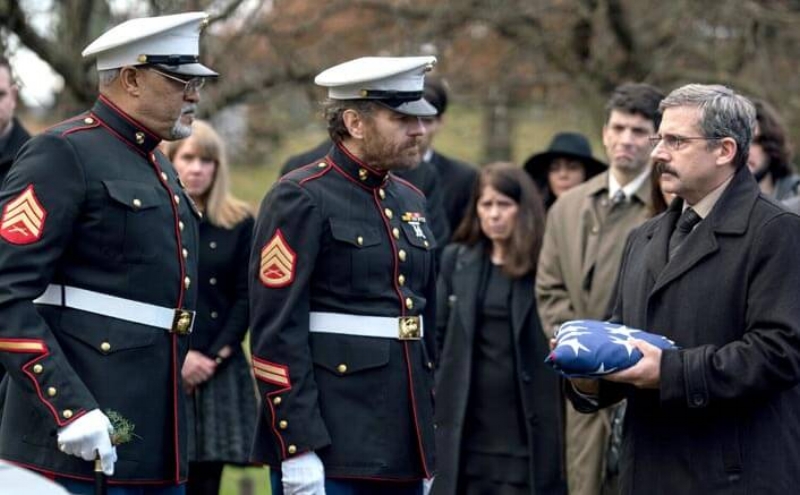ROMAN J. ISRAEL, ESQ.
Directing: B-
Acting: B+
Writing: B-
Cinematography: B+
Editing: B
If you want people to remember the title of your movie, and thereby know what to purchase tickets to at the multiplex, maybe don't use a title as fundamentally cumbersome and unmemorable as Roman J. Israel, Esq. Also if you want people to stay interested in your movie, maybe don't start and end it with transparent contrivances, including the lengthy narration of a legal brief detailing a man evidently suing himself.
On the other hand, if you want a great actor to play the title role in such a movie, who can single-handedly keep the story compelling in spite of its shortfalls, by all means hire Denzel Washington. Israel is so socially awkward that I squirmed in my seat repeatedly, while also finding it easy to believe this man had a deep knowledge of criminal law. Who knows how realistic it is? I'm not a lawyer, and neither is Denzel Washington.
We never actually meet Israel's partner, who does all the courtroom lawyering. We see his body in a hospital bed, in a coma after a heart attack -- the event that sets this story in motion. Israel has spent three and a half decades immersing himself in legal texts to serve as his partner's most knowledgeable legal advisor. Now he's suddenly out of his depth, attempting to cover for him in court.
Meanwhile, it turns out the firm has been "operating at a deficit" for years, and Israel is faced with losing his job. In comes another lawyer from a huge firm (Colin Farrell, adequate in performance and stunning in appearance -- I may have a bit of bias here) to help close things down, and ultimately offer Israel a new job.
The plot gets much more complex from there, but suffice it to say that Roman J. Israel, Esq details the descent of an idealistic defense attorney with activist roots into greedy nihilism. With that in mind, this is a surprisingly cynical movie, and it's difficult to gauge what to think or how to respond to it. What are we, as audiences, supposed to do with this?
There's a lot of places writer-director Dan Gilroy could have gone with this movie, and ultimately he never goes anywhere as interesting as it could be, or as Denzel Washington makes you want it to be. This would not be half the movie it is without Washington's performance, which nearly makes it worth seeing all on its own.
It's engaging enough: while watching this movie, the script, even as the film's weakest element, never allows the mind to wander. There's a grounded sensibility here that winds up being a bit of a double-edged sword: it feels more real than most legal dramas, but it also lacks much in the way of excitement. It's a compelling ride while it's being taken, and pretty forgettable in the end. That doesn't make the movie bad per se. It just makes it no better than good enough for now.
I did find some fascination in the details, particularly in the cinematography and production design. Gilroy offers a very evocative Los Angeles as his story's setting, and although I suspect this was not intentional, a couple of shots felt a lot like a presentation of the real present-day L.A. largely in the style of Blade Runner. It's not often you see present-day L.A. presented as a dense urban environment, but that's how it often looks here. One shot in particular seemed almost obvious, with its camera looking through a cityscape from the middle of a city alley between aging residential complexes, drenched in rain.
Plenty of the story takes place in bright daylight as well, from inside high-rise office and even one pseudo-chase scene on a remote highway in the desert, presumably on the outskirts of town. "Outskirts" in Los Angeles are always a long way away, so I was left to wonder how Roman J. Israel got that far out so quickly. But I like to nitpick, I guess.
And this is an easy movie to nitpick. It's also an easy movie to experience pleasantly, without being too critical. A story like this, with a mostly black cast and frequent references to civil rights, should really have a greater amount of thematic depth. Gilroy makes little effort to challenge his audience here -- but he succeeds in superficially entertaining them.
Observe, an interesting guy who is unpleasant to be around.
Overall: B









